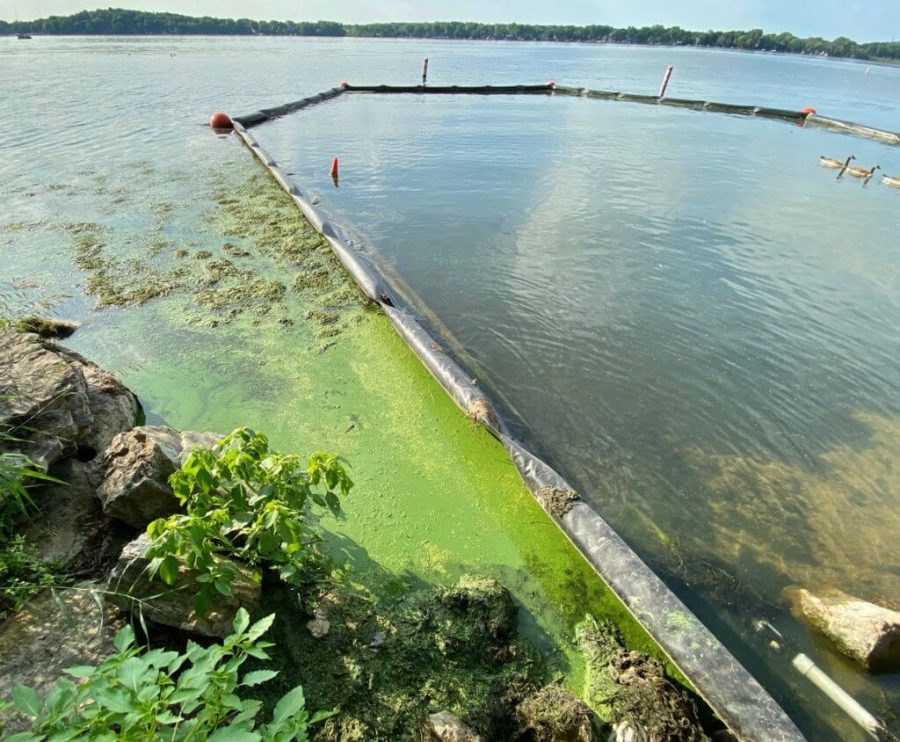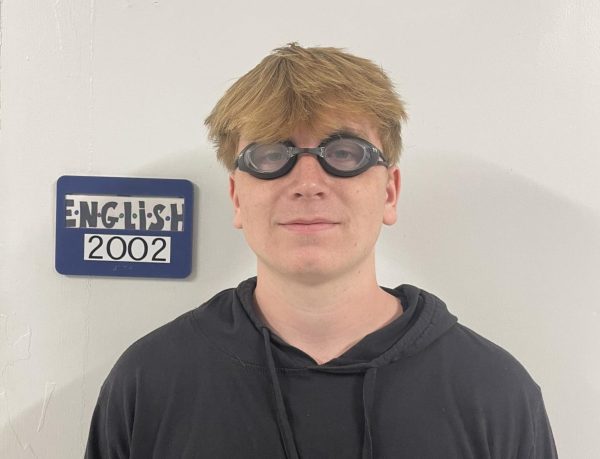The Legacy of Our Lakes and Rivers
The Goodland County Park Beach where Suck the Muck efforts were taking place shows the difference in cleanliness.
Suck the Muck (also called, “Legacy Sediment Removal”) is a project aimed at cleaning up Dane County’s local lakes and rivers. The project includes several areas of interest, such as the locally known Yahara chain of water bodies, including Lake Kegonsa. The overly simplified definition of this project is that people involved are removing sediment from those lakes and rivers.
While it may sound like an odd choice, this “muck” that lays at the bottom of the water slowly releases phosphorus. The details are shared by the Dane County Land & Water Resources department on their website, lwrd.countyofdane.com/CurrentProjects.
“Phosphorus concentrations of the Yahara chain of lakes [increased] the frequency and extent of algae blooms, creating green, slimy lakes and beaches. Sources of phosphorus, including livestock manure and fertilizer attached to sediments, or dissolved in water, which are then transported to streams and lakes through rainfall runoff,” the site states.
The sediment is named legacy sediment. Research conducted in 2014 by Dane County and the Wisconsin Department of Natural Resources provided information about the amount of phosphorus in the local lakes and rivers. This is to say, it was more than it should be and had been there since the 19th century, hence the actions that were planned by Dane County.
Paul Dearlove, the Deputy Director and Chief Science Officer at Clean Lakes Alliance explained more.
“In a way, [it’s] like cleaning the yard or cleaning your arteries, you know, to protect the heart. […] By removing this material that’s in the bottom of the streams, you’re also increasing the ability of water to flow through those channels,” Dearlove says.
The project has been divided into three phases, each focused on a body of water. The rivers have been measured for their sediment and concentration of phosphorus beforehand, which are then measured again after removing sediment to help conclude the amount removed. Phase one was planned to touch on Dorn Creek, Token Creek, Lower Six Mile Creek, Upper Dorn Creek, Upper Sixmile Creek, Yahara River, Door Creek, and Nine Springs Creek.
Dorn, Token, and Six-Mile Creek sediment removal has been achieved, reaching nearly 180,000 pounds of phosphorus removed.
“Many, many, many tons of material have been removed and to the question of like, well, how much phosphorus then is prevented? […] They’re trying to get a handle on [the exact number],” Dearlove says.
The director of Parks & Recreation in Stoughton, John Glynn, shared information about the process of testing the sediment.
“Interfluve was contracted in 2018 to complete sediment sampling and testing of the sediment […] Sediment is sampled using long hollow rods pushed down into the river bottom and the sediment gets trapped inside the rod. The person conducting the sediment sampling stops pushing down on the rod when they encounter resistance like a rock because sediment is soft,” Glynn says.
Otherwise, there are other aspects of the project that have taken place. Dane County plans to purchase 128.3 acres of land to pursue the goal of cleaning up local areas. This project is headed by Joe Parisi, a Dane County executive.
The project of tending to local lakes may ring bells for citizens of Stoughton if they are familiar with the project that plans to remove the dam and construct the Riverside Park along the Yahara river. The Yahara river does not have any sediment accumulation, so the Suck the Muck project isn’t planning on touching those parts.
“With that said, the sediment found outside of the river channel was tested and contains many heavy metals like arsenic. This contamination […] is likely a byproduct of industry that was located along the river in the early 1900s. The contaminated sediment is in a very shallow area of the millpond that will become exposed once the River Park is constructed,” Glynn says. “Strand Associates recently completed a Soil Management Plan for the contaminated sediment (will become soil when exposed) that addresses the contamination and will make the area safe for humans.”
The dam and its deconstruction has been the reason for some controversy within the town before, as it’s more local than any other project. The dam removal and the construction of the Riverside park will cost around $1.2 million with the approval of a grant from the Department of Natural Resources. There won’t be a tax increase to any people of Stoughton. The plan itself was the result of a paddler getting sucked under the dam in the summer of 2018, and being determined to be a safety hazard.
The project follows a list of goals for the town-developing facilities that generate money to aid other buildings or build new ones, improve local route connectivity, and steer riverfront parks for better recreational use.
The city of Stoughton has many other things planned, as does Dane county. While not all are focused on the environment and its water related parts, many things are still happening this year. The Suck the Muck project will continue its efforts, and the projects of Stoughton will continue to be worked on.

Naomi is a senior, and this is her third year on staff! She is this year’s associate and the website manager. She joined the Norse Star because it was...







